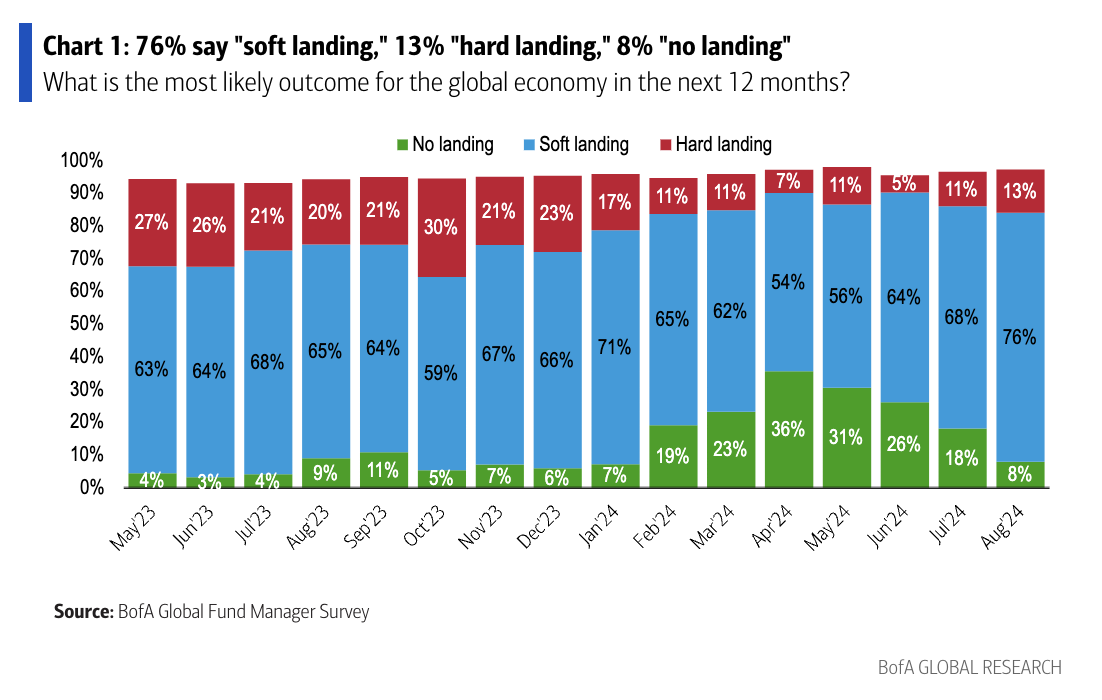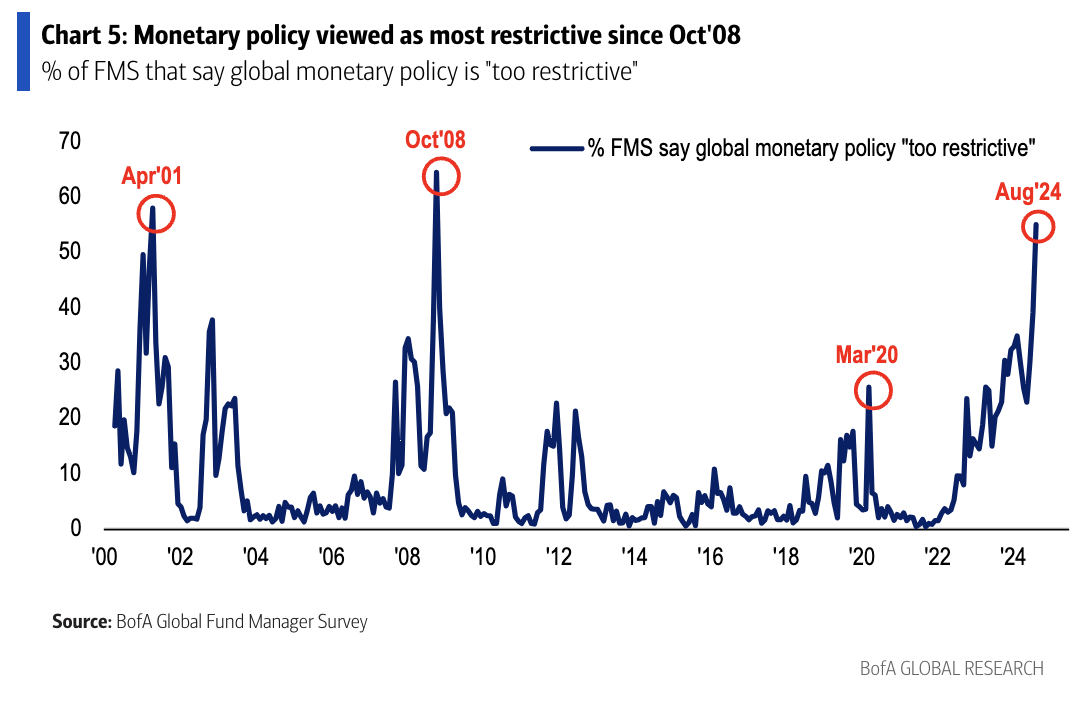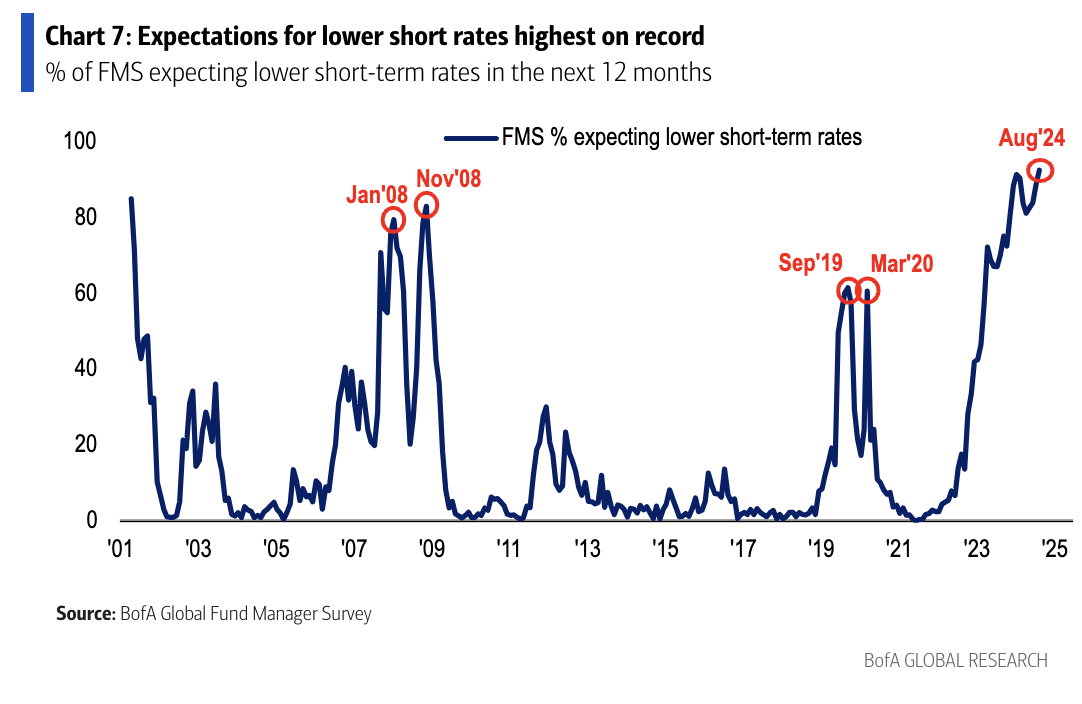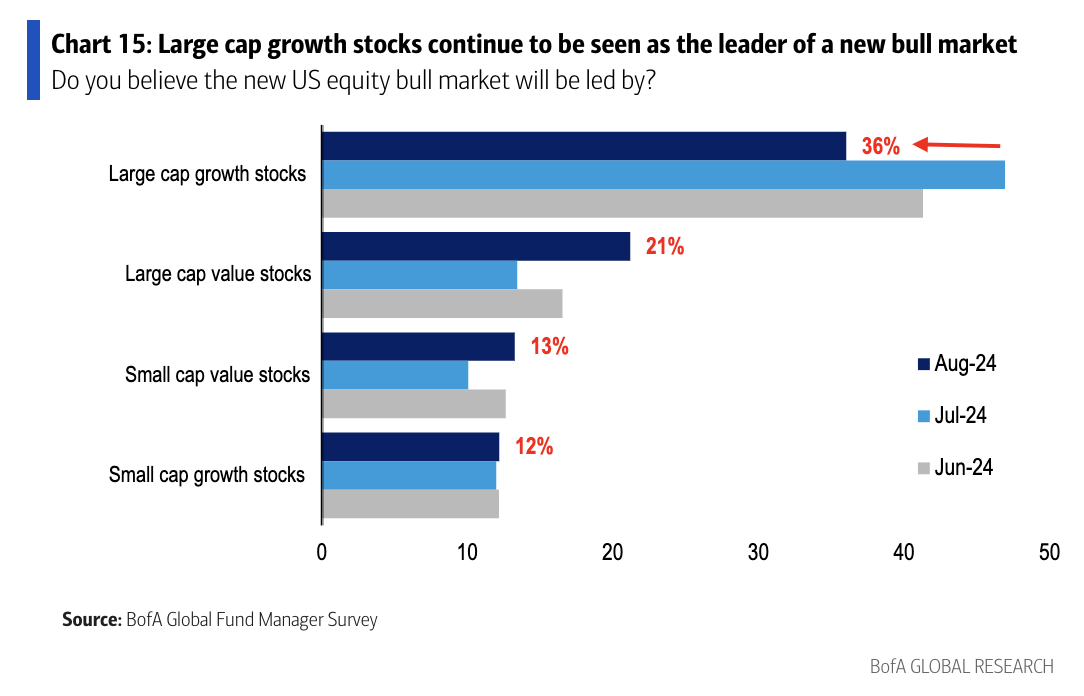Fundies are selling stocks in droves. Here's where they are allocating instead
Any read we can get on market sentiment and positioning right now is helpful, and there is arguably no more comprehensive read than the Bank of America Global Fund Manager Survey (FMS).
The survey is conducted monthly and asks 300 Bank of America clients worldwide to share how they are positioned at a big-picture level. The surveyed firms represent institutional clients, mutual funds, or hedge funds, and provide a really good indicator of what the biggest money is thinking about right now.
The latest FMS has hit journalists' inboxes and in this wire, I'll spotlight the five most interesting charts from the survey and the key data points which always make for interesting reading.
Key statistics from the July/August Bank of America Fund Manager Survey
- 76% of respondents still think the global economy will see a soft landing in the next 12 months.

This figure is up by eight percentage points since the last read in July, is up 22% since April 2024, and is in spite of the fact that global growth expectations are also at eight-month lows.
- 60% of surveyed fund managers say the Fed needs to cut at least four times over the next 12 months. 55% say that monetary policy is too restrictive. That figure is the highest since 2008.

- Aggregate sentiment is at a seven-month low, fund managers who said they have an overweight allocation toward equities fell from 33% to 11%, and cash levels ticked up from 4.1% to 4.3%
- The 11% overweight to risk assets like stocks and commodities is the lowest since January 2024 and the July-to-August drop is the biggest monthly drop since September 2022.
- US mega-cap tech stocks remain the top crowded trade for the 17th consecutive month with large-cap growth stocks being called out as the leaders of the next bull market (see "Chart 15" below).
You can see the dominance of the Magnificent Seven as an overweight trade in the next chart. Apart from the fact it has been the most crowded trade for 17 consecutive months, the long US tech (or long NASDAQ) trade has dominated most of the conversation over the last 10 years. And yet, these stocks just keep going up... and up... and up.

So where is all this cash going?
Part of this cash is going back into an accumulation phase - there was a 0.2% month-over-month increase in cash holdings. But at 4.3%, it still suggests that fund managers are fully invested in this market.
Relative to history, fund managers are ultra-long bonds at the moment. In particular, 93% of surveyed participants think short-term bond yields/rates will fall in the next 12 months - the highest figure ever recorded in the 24-year history of the survey.
The move out of stocks and into bonds is also remarkable given that "long bonds" were considered a contrarian trade just two months ago.

Investors were also clearly spooked by the snap sell-off, even if only a little bit. They offloaded most stocks last month - from EM to the US, Eurozone to the UK, and Japan. In fact, the only sectors that gained some love in the last month were healthcare stocks (which are a classic defensive play) and REITs (which are an interest-rate sensitive play.) Risk-taking, as a sentiment indicator, also fell to a seven-month low last month.
Bigger picture, fund managers remain the most underweight REITs and the most overweight healthcare.
The top four contrarian trades
- Long commodities versus stocks: This trade is derived from the fact that fund manager allocations to hard commodities (eg physical gold, oil futures) fell 6% month-over-month. The percentage of fund managers who are also remaining overweight commodities has slumped to near-COVID-era lows.
- Long rest-of-the-world versus US stocks: Fund managers were selling European, Japanese, and UK equities last month, and "short Chinese stocks" continue to be nominated as the second most-crowded trade out there.
- Long small cap (value) versus large cap (growth): The next chart tells the story of this contrarian trade. When the fund managers were asked which kinds of stocks would lead the next leg of the bull market, they went back to the stocks that led the most recent bull market: large-cap growth stocks. Just 25% of respondents between them plumped for small-cap stocks of any form to lead the next bull market.

- Long consumer discretionary vs healthcare: Healthcare continues to be the top sector trade for global equity investors. In contrast, higher interest rates, soaring mortgage rates, and weak consumer sentiment have all weighed on retailers and other discretionary names. In fact, consumer discretionary is the second-largest underweight by sector after REITs and only barely in front of materials stocks.
4 topics

